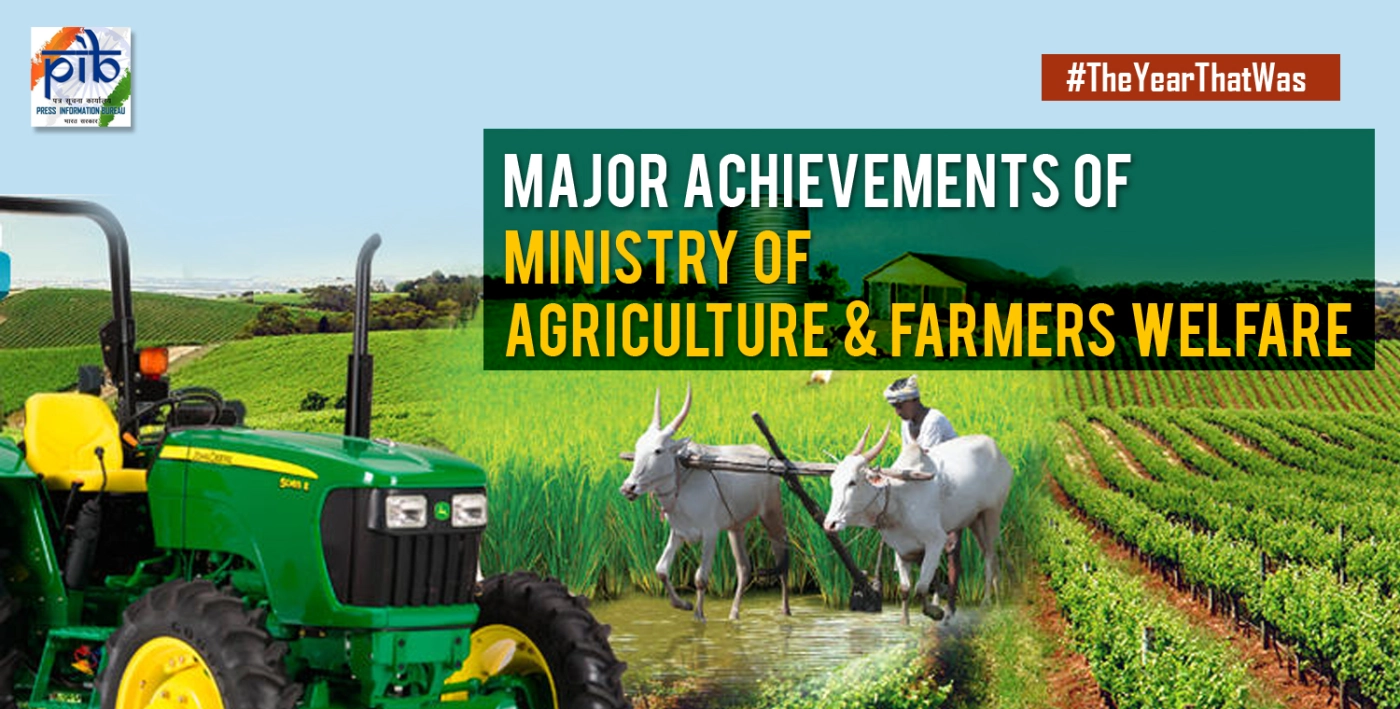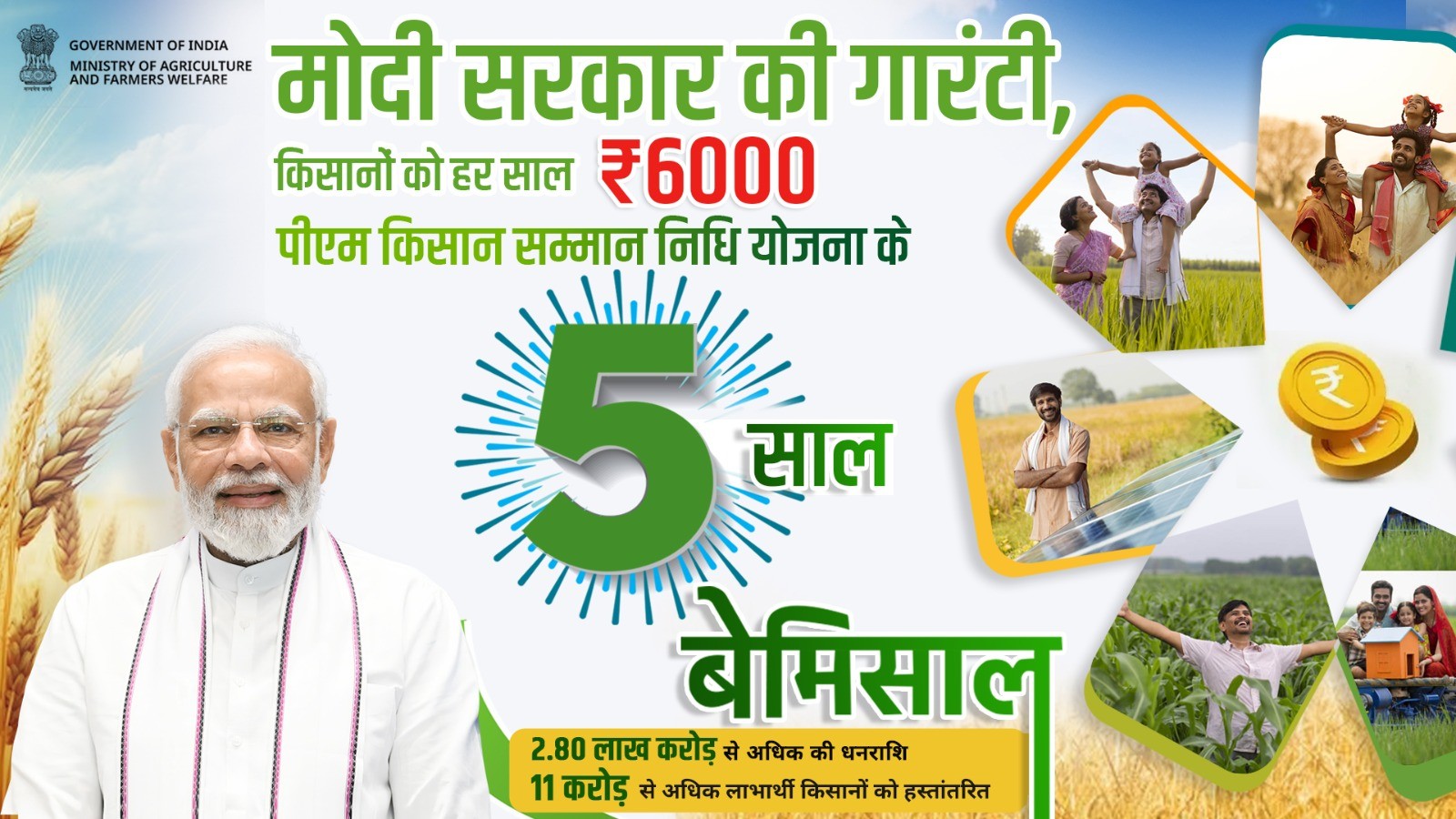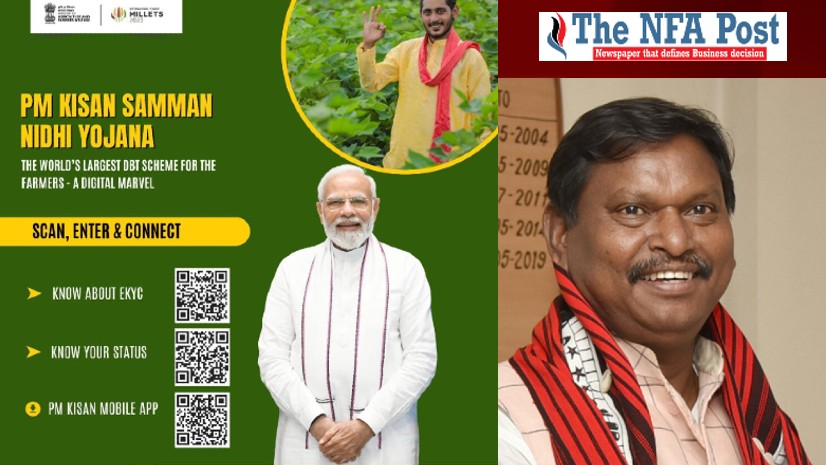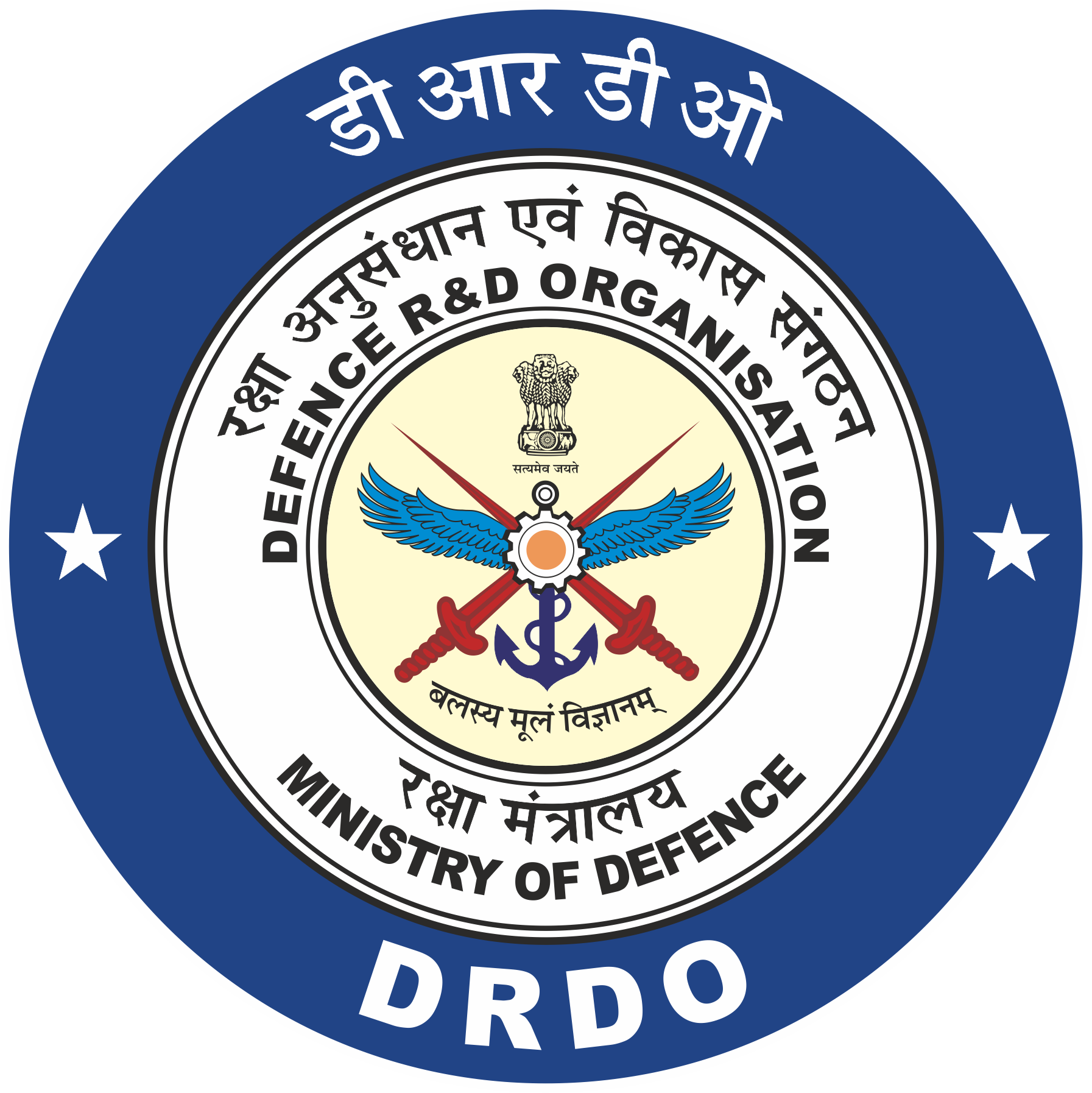New Delhi, NFAPost: Besides increase in average monthly income per agricultural household, India is moving ahead with its strategies for agricultural mechanisation as the government realises it is extremely vital to modernise agriculture and reduce drudgery of farming operations.
According to National Sample Survey Office (NSSO), Ministry of Statistics and Programme Implementation (MoSPI) organised Situation Assessment Survey (SAS) of Agricultural Households during NSS 70thround (January 2013- December 2013) with reference to the agricultural year July 2012- June 2013 by NSSO, it is found that average monthly income per agricultural household has increased from Rs 6426 during 2012-13 to Rs 10218 in 2018-19.
Also, during the period from 2014-15 to December, 2023 an amount of Rs 6405.55 crore have been allocated for agricultural mechanisation. The survey states that 15,23,650 numbers of machines and equipments have been provided to farmers on subsidy.
This information was given by Union Minister of Agriculture and Farmers’ Welfare Arjun Munda in a written reply in Rajya Sabha.
“The budget allocation of Ministry of Agriculture and Farmers’ Welfare, during 2013-14 was Rs 27,662.67crore. This has increased by more than 5 times to Rs 1,25,035.79 crores during2023-24 BE. As a result, Gross Value Added (GVA) of Agriculture and Allied Sector has been growing at a rate of 4.4% per annum over the last seven years,” said Union Minister of Agriculture and Farmers’ Welfare Arjun Munda.
Agricultural Technology Management Agency (ATMA) promotes decentralised farmer-friendly extension system in the country. The objectives of ATMA Scheme is to support State Government’s efforts and to make available latest agricultural technologies and good agricultural practices.
These are availed in different thematic areas of agriculture and allied areas to farmers through different extension activities viz; Farmers Training, Demonstrations, Exposure Visits, KisanMela, Mobilisation of Farmers Groups and organising Farm Schools etc.

Since 2014 to 2023 (31st December, 2023), an amount of Rs.5189.08 crore (Central Share) has been released to the States/UTs including MANAGE to carry out extension activities and 3,66,10,873 farmers have been benefited through different extension under the Scheme.
The Minister also highlighted that Pradhan Mantri Kisan Samman Nidhi (PM KISAN) aims at providing financial assistance to all landholding farmer families across the country, subject to certain exclusion criteria, to enable them to take care of expenses related to agriculture and allied activities as well as domestic needs.
“Under the Scheme, an amount of Rs. 6000/- per year is transferred in three 4-monthly installments of Rs.2000/- directly into the bank accounts of the farmers. Under the Scheme, the benefits of the scheme worth₹ 2.81 Lakh Crore had been provided to more than 11 crore farmers,” said Union Minister of Agriculture and Farmers’ Welfare Arjun Munda.
Narendra Modi-led Union Government fixed minimum support prices (MSPs) for 22 mandated crops, on the basis of the recommendations of the Commission for Agricultural Costs &Prices (CACP), after considering the views of State Governments, Central Ministries/ Departments other stakeholders, concerned.
“While recommending MSP, CACP considers important factors like overall demand-supply conditions, cost of production, domestic and international prices, intercrop price parity, terms of trade between agricultural and non-agricultural sectors, the likely effect on the rest of the economy, besides ensuring rational utilization of land, water and other production resources,” said said Union Minister of Agriculture and Farmers’ Welfare Arjun Munda.
To give recognition to one of the important recommendations of NCF on Price Policy, the Union Government in its Union Budget for 2018-19 had made an announcement to keep MSP at a level of one and half times of the cost of production as a pre-determined principle. Accordingly, MSPs for all mandated Kharif, Rabi and other commercial crops have been fixed with a return of at least 50 per cent over all India weighted average cost of production, each year, since 201819.

Also, Union Minister of Agriculture and Farmers’ Welfare Arjun Munda pointed out that the procurement of foodgrain has increased from 761.40 lakh metric tonnes in 201415 to 1062.69 lakh metric tonnes in 2022-23 benefitting more than 1.6 crore farmers. The expenditure incurred (at MSP values) on procurement of foodgrains increased from 1.06 lakh crores to 2.28 lakh crores, during the same period.
Narendra Modi-led government has come up with various intiatives to increase income generation and overall agriculture output across the country. Some of the schemes are as following.
National Food Security Mission (NFSM) aims to increase the production of rice, wheat and pulses through area expansion and productivity enhancement; restoring soil fertility and productivity; and enhancing farm level economy.
Rashtriya Krishi Vikas Yojana (RKVY) is a scheme with broad objectives of making farming a remunerative economic activity through strengthening the farmer’s effort, risk mitigation with major focus is on pre & post-harvest infrastructure. This scheme includes sub-components such as Per Drop More Crop, Sub-Mission on Agriculture Mechanisation, Soil Health and Fertility, Paramparag at Krishi Vikas Yojna, Rainfed Area Development and Crop Diversification Programme.
National Mission on Edible Oil-Oil Palm (NMEO-OP) has been launched by Government of India to promote oil palm cultivation for making the country Aatamnirbhar in edible oils with special focus on North-Eastern States and A&N Islands. The Mission aims to bring additional area of 6.5 lakh ha under Oil Palm plantation with 3.28 lakh ha in north-eastern states and 3.22 in Rest of India in next 5 years from 2021-22 to 2025-26.
Pradhan Mantri Kisan Samman Nidhi (PM KISAN): The Scheme aims at providing financial assistance to all landholding farmer families across the country, subject to certain exclusion criteria, to enable them to take care of expenses related to agriculture and allied activities as well as domestic needs. Under the Scheme, an amount of Rs. 6000/- per year is transferred in three 4-monthly installments of Rs.2000/- directly into the bank accounts of the farmers. Under the Scheme, the benefits of the scheme worth₹ 2.81 Lakh Crore had been provided to more than 11 crore farmers.
Pradhan Mantri Fasal Bima Yojana (PMFBY): Scheme was launched in 2016 in order to provide a simple and affordable crop insurance product to ensure comprehensive risk cover for crops to farmers against all non-preventable natural risks from pre-sowing to post-harvest and to provide adequate claim amount. During the year 2022-23 under PMFBY, 1174.7 lakh farmers applications were enrolled and the funds allocated stood at Rs. 15500 crores.
Pradhan Mantri Kisan Maan Dhan Yojana (PM-KMY): Pradhan Mantri Kisan Maandhan Yojna (PMKMY) is a central sector scheme launched on 12th September 2019 to provide security to the most vulnerable farmer families. PM-KMY is contributory scheme, small and marginal farmers (SMFs), subject to exclusion criteria, can opt to become member of the scheme by paying monthly subscription to the Pension Fund. Similar, amount will be contributed by the Central Government. As of now total number of farmers enrolled under the scheme is 23.38 Lakhs.
Institutional credit for agriculture sector has increased from Rs. 7.3 lakh crore in 201314 with a target to reach Rs. 20 lakh crore in 2023-24. Benefit of concessional institutional credit through KCC at 4% interest per annum has also now been extended to Animal Husbandry and Fisheries farmers for meeting their short-term working capital needs. A special drive has been undertaken since February 2020 to provide concessional institutional credit with focus on covering all PM-KISAN beneficiaries through Kisan Credit Cards (KCC). As on 05.01.2024, 465.42 lakh new KCC applications have been sanctioned with a sanctioned credit limit of Rs. 5,69,974 crore as part of the drive.
Agri Infrastructure Fund: A one Lakh Crore, Agriculture Infrastructure Fund (AIF) scheme was launched with an objective to mobilise a medium – long term debt financing facility for investment in viable projects for post-harvest management Infrastructure and community farming assets through incentives and financial support in order to improve agriculture infrastructure in the country.
Formation and Promotion of 10,000 Farmer Producer Organisations (FPOs): The Government of India has launched the Central Sector Scheme (CSS) for “Formation and Promotion of 10,000 Farmer Producer Organisations (FPOs)” in the year 2020. Formation & promotion of FPOs are to be done through Implementing Agencies (IAs), which further engage Cluster Based Business Organisations (CBBOs) to form & provide professional handholding support to FPOs for a period of 05 years including preparation and execution of business plan for the concerned FPOs for ensuring better marketing opportunities & market linkages on sustainable basis. As on 31.12.2023, 7,774 no. of FPOs have been registered under new FPO scheme. Equity Grant of Rs. 129.5 Crore has been released to 2,933 FPOs. Credit Guarantee Cover worth Rs. 226.7 Cr. issued to 994 FPOs.
Namo Drone Didi: The Government has recently approved Central Sector Scheme for providing drones to the Women Self Help Group (SHGs) for the period from 2024-25 to 2025-26 with an outlay of Rs. 1261 Crores. The scheme aims to provide drones to 14500 selected Women Self Help Group (SHGs) for providing rental services to farmers for agriculture purpose (application of fertilisers and pesticides).





